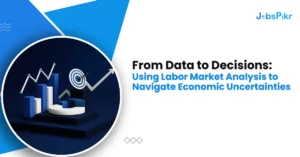The department of Human resources in organizations is constantly looking for ways to improve their performance, sometimes using effective software and at other times using methods to improve the productivity of the workforce. Human capital management (HCM) alters the functions of human resources in ways that are new to enterprises and help them boost their business value.
What Is Enterprise Human Capital Management?
Enterprise human capital management is a way of functioning that gives prime importance to the employees as valuable assets to the organization. It encompasses a set of tools that aid in recruiting the right people and managing employees efficiently thereby maximizing productivity.
In addition to the administrative functions of HR like recruiting, payroll, training, etc, HCM gives priority to employee management and talent management. This is because it views employees as assets who need to be managed for bringing home value to the business. Basically, HCM is used by organizations to automate their processes like recruitment, management, and training of employees.
The practices included in HCM are the following.
- Workforce planning
- Compensation planning
- Recruiting and hiring
- Onboarding
- Training
- Time and attendance
- Workflow management
- Payroll
- Performance management
- Benefits administration
- Reporting and analytics
- Employee service and self-care
- Compliance
- Retirement services
Importance Of Human Capital Management
Today, every organization knows what their biggest treasure is, the employees. And HCM provides them with tools to take utmost care of these valuable assets. When the employees are managed better to improve their efficiency and productivity, it is the organization that benefits in the long run, in terms of profitability.

With employees of newer generations taking center stage, the whole work culture is going to change or has already changed to some extent. These workers opt for a better work-life balance than any other generation has preferred. There is also a rise in temporary job opportunities and freelancing careers that again add to changing work styles. Lack of a proper management tool in place can wreak havoc in organizations.
Organizations have started gathering huge amounts of data from their employees for better insight. HCM helps manage this and helps make better decisions whenever a need arises. With complex laws in place, organizations can lose face if they don’t care enough to keep a check on their employees. HCM technology lets enterprises be in sync with government policies pertaining to them.
What Are The Functional Components Of HCM?
Talent Management
The whole talent lifecycle of organizations is managed by the HCM.
- Talent Acquisition: Help in talent acquisition by doing an effective talent hunt and finding the candidates who are perfect for particular jobs using novel technologies.
- Performance management: Bring the individual goals in line with the company goals while also optimizing performance.
- Career development: Uncover career opportunities for employees and have a proper development plan to motivate employees to have concrete career goals.
- Talent review and succession management: Analyse the talent trends in organizations with respect to their interaction with the environment. HCM also plans for future requirements in leadership and other positions.
- Learning: Help in employee training and meeting the learning requirements of the current workforce.
HR
- Employee lifecycle: Manage the lifecycle of employees starting from recruitment to retirement.
- Strategic HR: Build job structures, keep a record of personal and professional information, manage the documents of employees and forecast the performance and attrition.
- HR service delivery: Offer an HR help desk for HR cases and enable employee and manager self-service on devices.
- Employee engagement: Encourage the employees with volunteering, wellness, personal branding tools, and competitions.
- Compliance and detecting fraud: Ensure the health and safety of employees by reporting incidents and keeping data safe by fraud detection.
Workforce Management
- Increase automation, control labor costs, and make way for easier compliance for employees.
- Compensation: Modeling, analysis, budgeting, and administration of compensation plans.
- Total compensation: All the employees, managers, and executives get a fair idea of all compensation activity.
- Pay-for-performance: Including goal attainment, performance ratings, etc into compensation calculations.
Workforce Rewards
Attract and maintain the right talent and create value through a unique workforce rewards scheme. Use creative technologies to maintain the accuracy of payroll and compensation data.
- Compensation: Modeling, analysis, budgeting, and administration of compensation plans.
- Benefits: Offer flexible benefit plans that are in sync with the changing business needs.
- Payroll: Process payroll and assure compliance by ensuring accurate tax reporting, payroll, and regulatory rules.
Benefits Of Enterprise Human Capital Management
1. Improve human capital management
The biggest advantage of HCM is that it provides methods to manage an organization’s biggest assets – the people. The human resource department can make use of the software to find the best candidates suited for specific posts and then train them to work for business goals.
2. Cater to capability gaps
When there are capability gaps, the performance of the company can be at stake. HCM identifies these gaps and helps the HR department plan for better recruitment criteria to make hires to important positions that fill these gaps.
3. Paves way for growth organically
When each employee in the organization is given attention, the company can witness organic growth. Knowing the talents of individual employees and then optimizing them can lead to greater productivity and profitability.
4. Better performance reviews
Providing different levels of performance reviews like self-reviews, peer reviews, and manager reviews is a brilliant way to better the efficacy of these reviews. When the employees get actionable feedback from their peers and managers, they get a better idea of how to put in the right effort.
Conclusion: Realize the Importance of Enterprise Human Capital Management
Realizing the benefits of enterprise human capital management, more and more organizations are on the path of welcoming HCM technology to their workplaces. Whatever is the business strategy, if the employees can feel that the business goals are not different from their own, it makes a lot of difference to the performance of the organization.
With the changing attitudes of the workforce and the overall working styles, it is expected that HCM will find its way to every aspect of organizations.




